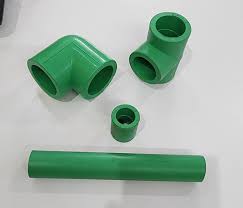Dec . 23, 2024 21:05 Back to list
HDPE Pipe Specifications and Dimensions in China for Various Applications
Understanding China HDPE Pipe Dimensions for Optimal Application
High-Density Polyethylene (HDPE) pipes are widely used in various industries due to their durability, resistance to corrosion, and excellent chemical resistance. Understanding the dimensions of these pipes is crucial for ensuring compatibility with existing systems and for optimizing performance in various applications. This article will delve into the significant aspects of HDPE pipe dimensions as practiced in China.
HDPE Pipe Standards and Specifications
In China, HDPE pipes adhere to several key standards that dictate their dimensions, material properties, and performance characteristics. The most commonly referenced standards include GB/T 13663, which outlines the structure, testing, and performance of HDPE pipes. These standards ensure that the pipes can withstand environmental stress and pressure levels typical of municipal and industrial applications.
Common Dimensions of HDPE Pipes
The dimensions of HDPE pipes can vary based on their intended use, but they typically conform to international sizing standards, including DN (Diameter Nominal) and OD (Outside Diameter). In general, sizes can range from 16mm up to 1200mm in diameter, depending on the applications.
1. Nominal Pipe Size (NPS) In China, nominal pipe sizes can be categorized according to their DN value. For instance, a DN32 pipe would have an outer diameter of 32mm, while larger pipes such as DN500 will have a diameter of 500mm. It is important to note that these nominal sizes may not always correspond directly to the outer diameter, as the wall thickness of the pipe can vary based on the pressure rating and material standards.
china hdpe pipe dimensions

2. Wall Thickness Wall thickness is critical for HDPE pipes, particularly in applications involving pressure or structural support. Pipes are classified into different pressure ratings such as PN4, PN6, PN10, and PN16, corresponding to the maximum pressure they can handle in bar. The thicker the wall, the greater the pipe can withstand pressure without risk of failure. The wall thickness is usually specified in the manufacturing standards and can range from a few millimeters to over 30mm, depending on the pipe diameter and pressure rating.
Advantages of Knowing Pipe Dimensions
Understanding the dimensions and specifications of HDPE pipes can provide various advantages in project planning and execution. First, accurate knowledge of pipe dimensions ensures proper installation and connection with other piping systems. Misalignment in sizes can lead to leaks, increased maintenance costs, and even system failure.
Additionally, correctly sized pipes contribute to improved flow rates and system efficiency. Oversized pipes can lead to increased energy costs and suboptimal fluid dynamics, while undersized pipes may cause pressure losses and increased wear.
Conclusion
In summary, understanding the dimensions of HDPE pipes is essential for engineers, contractors, and project managers in various sectors including water supply, sewer systems, agricultural applications, and industrial processes. By adhering to the standardized measurements set forth in Chinese regulations and industry practices, stakeholders can ensure not only the efficiency and reliability of their piping systems but also longevity and reduced costs over time. Proper selection and application of HDPE pipes tailored to specific dimension requirements will undoubtedly lead to successful project outcomes.
-
Flexible 32mm HDPE Pipes in Coil | Durable Water & Gas Lines
NewsAug.12,2025
-
DN50 HDPE Pipes in Coils: Flexible, Durable & Easy Install
NewsAug.11,2025
-
32mm HDPE Pipes in Coil: Durable, Flexible, Easy Install
NewsAug.10,2025
-
140mm PVC Drilling Pipe: Durable & Efficient Well Casings
NewsAug.09,2025
-
Flexible DN50 HDPE Pipes in Coils: Durable & Easy Install
NewsAug.08,2025
-
DN100 PVC Pipes for Well Casings | Durable & Corrosion-Proof
NewsAug.07,2025

